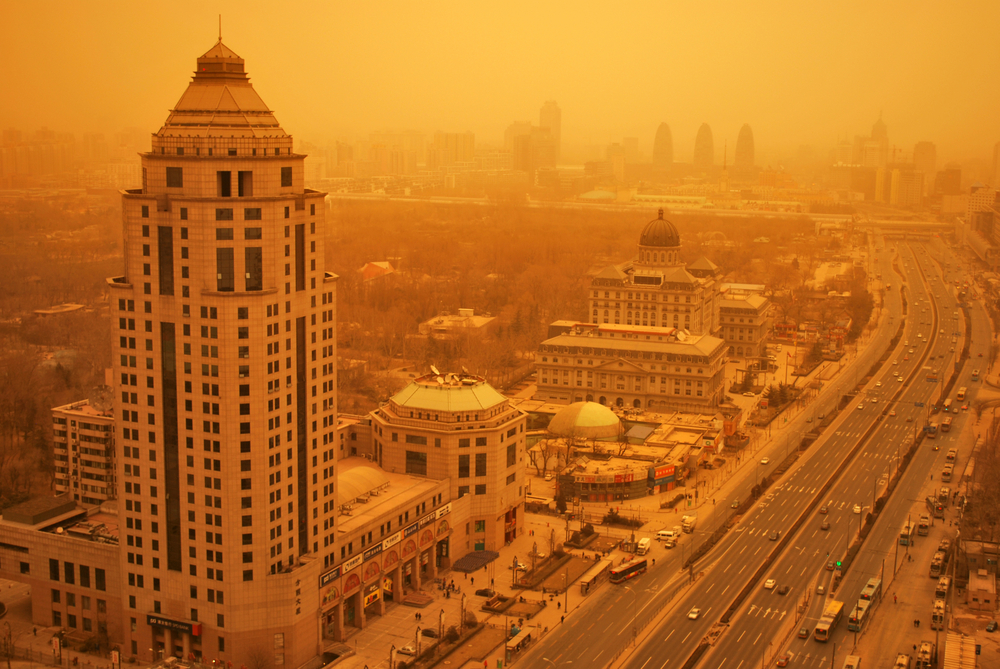A massive dust cloud covered Beijing, China, earlier this week. Multiple commentators noted the “apocalyptic” feel that the images provoked.

This event was not an end of the world movie, though, and it also is not as new or unprecedented a phenomenon as many believe. For more than a decade, two giant dust bowls have been forming globally and causing enormous havoc in the surrounding regions where their impacts are heaviest. These dust bowls are unlike anything we have seen in recorded history.
The first major dust bowl forming in the earth today is the one that impacted Beijing this week. Every year in eastern China, residents prepare for the “dust storm season” to begin as dust clouds from northwestern China and Mongolia obscure visibility and raise pollution warnings to dangerous levels.
As early as 2009, Wang Tao, a scholar who specializes in studying and tracking the world’s desertification, noted between 1950 to 1975, an average of 600 square miles of land turned to desert each year. Between 1975 and 1987, this climbed to 810 square miles a year. From then until the century’s end, it jumped to 1,390 square miles of land going to desert annually. That trend is only worsening since the year 2000. Each spring, an average of ten dust storms a year originating in these regions of Mongolia and western China spread across Asia, leading to the worst dust storms on record not only in China but also in South Korea within the last decade.
The second major dust bowl forming in the earth today is in the Sahel region of the African continent. This broad region stretches from Somalia and Ethiopia to Senegal and Mauritania. The Sahel separates the Savannah desert of the north from the rain forests of the southern part of the African continent.

The dust storms not only threaten local environments and economies with health concerns and economic disruption. The causes of the dust storms include significant wind erosion that is depleting agricultural soil. In the last half half-century, dust storms in the Sahel have increased tenfold. Niger, Chad, northern Nigeria, Burkina Faso, and Mauritania have seen their agricultural systems deeply impacted by these natural disasters.
According to Lester Brown at the Earth Policy Institute, “Nigeria, Africa’s most populous country, is losing 868,000 acres of rangeland and cropland to desertification each year. In Africa’s far west, the number of dust storms jumped from 2 a year in the early 1960s to 80 in 2004.”
- Additional Reading – Full Planet, Empty Plates: The New Geopolitics of Food Scarcity
It is no coincidence that each of these regions has seen an uptick in ethnic violence and religious extremism in the last decade. As resources become more scarce, desperation is fueling extremist elements in the aftermath. As I detailed in my recent book, This Is How the World Ends, the convergence of crises in food, water, and population is accelerating the chaos around the globe. Dust storms are one symptom of that growing chaos, but so are the human and systemic responses to the dust storms.
On Monday, the dust storm in Beijing was a passing story that many in the media pushed for its dramatic photos, but more is going on behind these headlines than most recognize. The story of the rising frequency of dust storms is the story of rising chaos around the globe.





